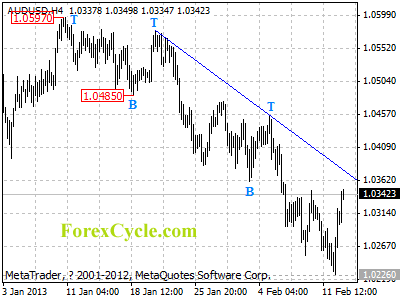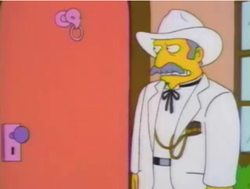It is in the air and has no name, but something wicked this way comes. Stirrings of another cold war – this time with the giant in the East.
In what follows, we’ll take a look at a potential flash point in the South China Sea, run over some geopolitical history and circle back with investment conclusions.
The impetus to take to the keyboard starts with the worrisome tensions between China and Japan over a mishmash of contested islands.
If that were all, it would be bad enough. But it is far worse. As The Wall Street Journal reports, recent naval encounters ‘heightened fears of a military conflict between the Asian giants – one that could entangle the U.S.’ The italics are mine.
How could the U.S. get dragged into this? We pick up again from The Wall Street Journal:
‘The continuing tensions put Washington in a bind. While the U.S. doesn’t want a war in Asia, it also can’t risk weakening Japan and emboldening China without undermining its entire strategy in the Pacific…The U.S., Japan’s largest military ally, is bound by a six-decade old security treaty to defend Japan from any attack.’
There is so much that is awful here; I hardly know where to begin…
The Nightmare of US Foreign Policy Begins
The root of this “strategy” and “security treaty” is a flawed worldview, one hatched by flaccid old men who look at the world as a chessboard.
It is the kind of thinking that led to the Cold War with the Soviet Union, the Korean War, Vietnam and all our costly adventures abroad since. It all began just after World War II.
The blood spilled in WWII had not yet dried, the ruins of European cities had not yet ceased to smolder. Yet the powers that be were already itching for another fight.
On the evening of April 25, 1945, the United Nations Conference on International Organization opened at the San Francisco Opera House. Eyewitnesses likened it to a Hollywood opening of a film, with camera flashbulbs popping and huge crowds.
There, the architects of world politics gathered. They were an unimpressive lot, a bunch of gray and stooped and wrinkly men in suits and ties. Save for the flowing robes and headdresses of the Saudis, the group looked like they might work at an IBM building or a Social Security office.
Appearances deceive because what was happening here was sinister and foreboding. Reporters on the scene picked up the unmistakable vibe.
Walter Lippmann, the renowned journalist, wrote ‘that the main preoccupation of so many here has not been Germany, but the Soviet Union.’ He added that normal relations with the Soviet Union would be impossible ‘if we yield at all to those who, to say it flatly, are thinking of the international organization as a means of policing the Soviet Union.’
The San Francisco conference was a failure of diplomacy. Both sides were at fault. (I don’t need to remind you about the crimes of Stalin.) And looking back on accounts of the conference today, later events seem inevitable.
If San Francisco was the coin toss before the game, what came next was the kickoff.
Historian Alan Milchman, writing for the journal Left & Right in the spring of 1965:
‘The Cold War can be said to have begun in earnest in March 1947 when the president issued his now famous Truman Doctrine. The Truman Doctrine was a declaration of war on communism throughout the globe in which encirclement of the Soviet Union was arrogantly proclaimed.’
In 1949, the Western powers created NATO, which would further chill relations with a host of excluded countries.
For the next few years, the U.S. would fight a war in Korea that would cost more than 35,000 American lives. Barely a decade later, the U.S. would find itself in an even bloodier conflict in Vietnam. And so the whole nightmare of American foreign policy unspooled.
The Parallels of History Today
When I think about the potential conflict between China and Japan (with the U.S. invariably fouled up in the mess because of its entangling alliance with Japan), I frame it in this context and cannot miss the parallels.
From a geopolitical point of view, the most important outcome of WWII was the emergence of the Soviet Union and America as the world’s superpowers. This rivalry would cast a long shadow for a long time.
Keep that in mind and let’s look at the rise of China as a muscular force on the world stage.
I turn now to one of my favorite history books, Power and Plenty: Trade, War and the World Economy in the Second Millennium. Authors Ronald Findlay and Kevin O’Rourke write that the rise of India and China ‘to their natural roles as major economic and political superpowers’ poses a great geopolitical challenge.
‘In the past,’ they write, ‘the world has found it very difficult to adjust to the emergence of industrial ‘latecomers,’ new powers eager to play an equal role with the dominant nations of the day.’
And thus history threatens to repeat. Perhaps a new Cold War will emerge between the U.S. and its allies against China and its allies. Pushed by abstract ideals and “strategy,” will the world powers fumble along a path to war?
I hope not, but let’s ask the question: What would a new cold war mean for investors?
Power and Plenty provides a clear answer. The book deals mainly with international trade. What the authors show is that such global trade is fragile. Openness between borders ebbs and flows. Times of peace lead to great expansions of trade. Political turmoil leads to its contraction. Here is Findlay and O’Rourke:
‘The comparatively peaceful 19th century saw an unprecedented trade expansion; World War I, World War II and the Cold War all had large, negative, long-run effects on trade. The most recent globalization coincided with the end of the Cold War, and took place in a period in which warfare remained all too common, but tended to be national or regional, rather than global in scope.’
Power and Plenty points out that trade between East (Eastern Europe and the Soviet Union) and West (Western Europe and the U.S.) contracted immensely as a result of World War II and the Cold War.
From the East’s perspective, trade with the West was 73% of all trade in 1938, but only 14% by 1953. From the West’s perspective, trade with the East was 9.5% of all trade in 1938 but only 2.1% by 1953.
In short, trade collapsed. So we have our investment conclusion. Should relations between China and Japan/U.S. turn frigid, then trade between the two camps would be the first casualty.
Hence, any businesses in one camp dependent on doing business in the other camp would be hurt. Said another way, you would want insular ideas not so exposed to international trade flows.
It will be a shame if that happens. I am watching developments in Asia with interest. American foreign policy has been a travesty for a long time, which is ironic given the country’s founding.
Everything America needs to know about how to conduct its foreign policy comes from two early sources — the farewell address of George Washington in 1796 and the inaugural address of Thomas Jefferson in 1801.
Washington advised the U.S. to ‘steer clear of permanent alliances’. And Jefferson most eloquently encouraged ‘peace, commerce and honest friendship with all nations, entangling alliances with none’.
Yet look how far we have strayed from this wisdom today. Now we apparently have an ‘entire strategy in the Pacific’ to quote from The Wall Street Journal. One that was never put up for a vote. One that the people have had no say in crafting. One that – like other stupid doctrines created by flabby old men behind closed doors – leads to young men dying in rice paddies or mountain passes far from home.
The great libertarian Randolph Bourne’s most famous epigram comes to mind. ‘War is the health of the state’. It pretty much sucks for everyone else.
Chris Mayer
Contributing Editor, Money Morning
From the Archives…
Two Questions to Ask Before You Buy Another Stock
8-02-2013 – Kris Sayce
Are These 5 Blue-Chip Stocks Still a Good Buy?
7-02-2013 – Kris Sayce
Don’t be Long and Wrong on this Stock Market Rally
6-02-2013 – Kris Sayce
Perceptions of Beauty and Stock Valuations
5-02-2013 – Satyajit Das






